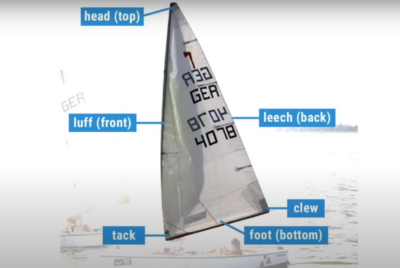Luffing Sailing: Navigating the Wind with Skill
Ahoy, fellow sailors! Today, I want to dive into the captivating world of luffing sailing, a skill that can truly elevate your experience on the water. Whether you’re a seasoned sailor or just dipping your toes into the world of sailing, understanding the techniques involved in navigating close to the wind is crucial for mastering the art of sailing efficiently and safely.

Understanding Luffing Sailing
Luffing sailing, in simple terms, refers to the fluttering or flapping motion of a sail when it is no longer properly filled with wind. This phenomenon occurs when the angle of the sail relative to the wind is too close, causing it to lose its aerodynamic shape and effectiveness. Several factors can influence this, including wind strength and direction, sail trim, and boat speed. Controlling luffing is essential for maintaining optimal speed and maneuverability while sailing.
Techniques for Effective Sailing
To become proficient in sailing close to the wind, mastering certain techniques is essential. First and foremost, paying close attention to sail trim is paramount. Properly adjusting the sails to match the wind angle and strength can minimize flapping and maximize propulsion. Additionally, developing a keen awareness of wind direction and shifts is crucial for anticipating and adjusting to changes effectively. Experimenting with different steering techniques, such as feathering or easing the helm, can also help maintain forward momentum.
Avoiding Common Mistakes
In the pursuit of mastering this skill, it’s essential to be mindful of common mistakes that can hinder progress. One such mistake is overtrimming the sails, which can result in excessive heeling and increased flapping. Ignoring wind shifts is another pitfall to avoid, as failing to adjust sail trim accordingly can lead to loss of speed and control. Effective communication among crew members is also critical to ensure everyone is on the same page when it comes to managing these situations.
Benefits of Mastery
The rewards of mastering these techniques are plentiful. By honing your skills in this area, you can experience enhanced speed and efficiency while sailing, allowing you to cover more ground in less time. Additionally, mastering these techniques can significantly improve maneuverability, enabling you to navigate tight spaces and execute intricate maneuvers with confidence. Furthermore, understanding how to control flapping can enhance safety on the water, reducing the risk of accidents or mishaps.
Tips for Practicing
Like any skill, mastering sailing close to the wind requires dedication and practice. Schedule regular practice sessions to hone your skills and familiarize yourself with different sailing conditions. Don’t hesitate to seek guidance from experienced sailors or instructors who can offer valuable insights and tips. Analyzing your performance after each practice session and making adjustments as needed is key to continuous improvement.
Importance of Safety Measures

While mastering these techniques can be exhilarating, it’s essential to prioritize safety at all times. Ensure you and your crew are equipped with appropriate safety gear, including life jackets and harnesses. Stay informed about weather conditions and be prepared to adjust your sailing plans accordingly to avoid putting yourself in harm’s way. Familiarize yourself with right-of-way rules and practice good seamanship to prevent collisions and accidents.
Conclusion
In conclusion, luffing sailing close to the wind is a fundamental skill that every sailor should strive to master. By understanding the principles, practicing effective techniques, and prioritizing safety, you can elevate your sailing experience and unlock new possibilities on the water. So hoist your sails, catch the wind, and embark on an adventure filled with excitement and discovery!

FAQs
What is sailing close to the wind?
Sailing close to the wind refers to the technique of navigating a sailboat as close to the direction of the wind as possible without losing forward momentum.
Why is mastering these techniques important?
Mastering these techniques is important for optimizing speed, maneuverability, and safety while sailing.
How can I improve my skills in sailing close to the wind?
You can improve your skills by practicing regularly, seeking guidance from experienced sailors, and analyzing your performance to make necessary adjustments.
What are some common mistakes to avoid?
Common mistakes to avoid include overtrimming the sails, ignoring wind shifts, and poor communication among crew members.
Why is safety important in sailing close to the wind?
Safety is paramount to prevent accidents and ensure an enjoyable and secure sailing experience for everyone involved.




